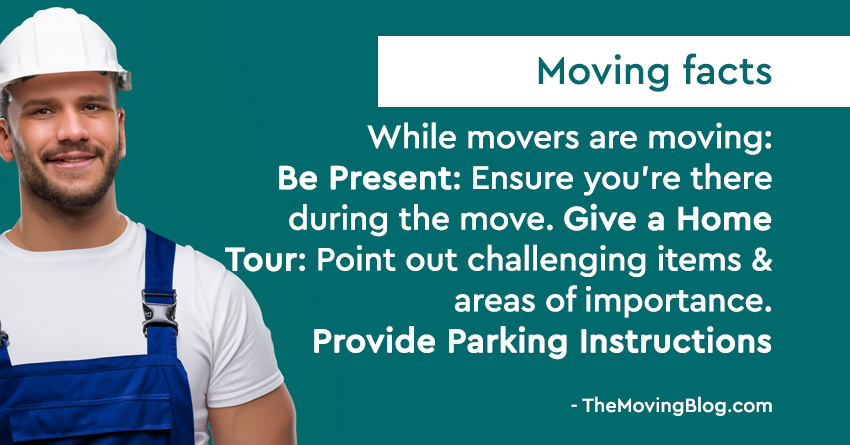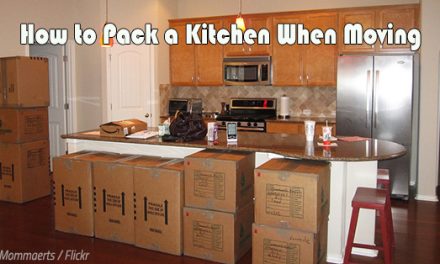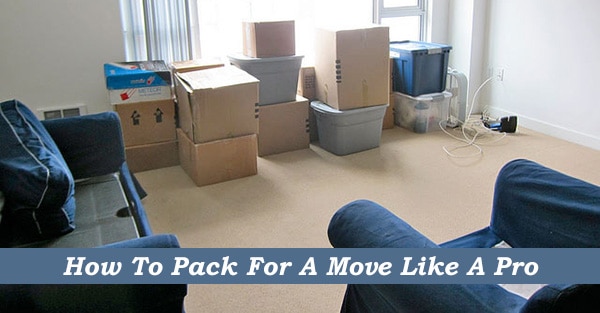The moving day is blend of excitement, nostalgia, and… utter chaos? But fear not, for I’ve been through this rodeo more times than I can count, and I’ve gathered some pearls of wisdom along the way. With a dash of humor and a sprinkle of firsthand experience, let’s dive into how you can make moving day smoother than your grandma’s mashed potatoes.

Be Present: Ensure you’re there during the move or assign a reliable person to be available.
The importance of being present during a move cannot be overstated. Think of it like a major surgery – you wouldn’t leave the operation room, would you? Okay, maybe not the best comparison, but stay with me. Research shows that in the past year, only 8.4% of Americans moved. Given these lower numbers, movers might not be as practiced as they used to be. Being present ensures that you can provide clarity on what’s precious and what’s not. For instance, that old coffee mug? Not a big deal. But the coffee mug your kid made in 3rd grade? Priceless. Remember, movers aren’t mind readers. Yet.
Give a Home Tour: Point out challenging items and areas of importance during the move.
Movers aren’t psychic, much as we might wish otherwise. When they first arrive, take them on a brief tour. Point out the antique furniture, the tricky stairwell, and oh, that closet you swore you’d clean out but never did. You know, the one that’s become a black hole of forgotten items. By guiding them, you’ll avoid any “Oops, we didn’t know that was valuable!” moments.
| Heading | Key Tip |
|---|---|
| Be Present | Be there to guide and communicate. |
| Home Tour | Highlight special items and areas. |
| Parking Instructions | Designate a spot to avoid fines. |
| Clear the Path | Ensure a trip-free environment. |
| Kids and Pets | Keep them occupied and safe. |
| Offer Refreshments | Hydrate and feed the movers. |
| Be Available | Stay on hand for quick decisions. |
| Pack in Advance | Organize and label items. |
Provide Parking Instructions: Determine and communicate where the movers can park.
Remember the time I assumed movers knew not to park on the neighbor’s freshly seeded lawn? Yeah, that didn’t end well. A clear, designated spot close to the entrance will make the process faster and keep everyone on friendly terms.
Clear the Path: Ensure the movers’ route from the house to the moving van is free of obstructions.
Obstacles on moving day are like the plot twists in a telenovela: dramatic and unnecessary. Keep pathways clear to speed up the process and reduce the risk of accidents. Trust me, you don’t want to see a mover doing the limbo with your flat-screen TV.
Keep Kids and Pets Occupied: Ensure they are out of the way to avoid interference or potential mishaps.
Kids and pets add joy to our lives, but on moving day, they can be as chaotic as a squirrel in a nut store. Whether it’s setting up a playdate or using that new movie as a distraction, keeping them occupied will help things run smoothly. And perhaps save Mr. Whiskers from a surprise adventure in a moving box.
Offer Refreshments: Provide drinks and possibly meals for the movers.
Once, in the scorching heat of July, I offered my movers some cold lemonade. I swear it was as if I’d handed them a pot of gold. A little hydration and nourishment can go a long way in keeping energy levels up and showing appreciation.
Be Available for Assistance: Be on hand to answer questions or resolve issues that may arise.
While it’s tempting to take a backseat and let the pros handle things, staying accessible can make a world of difference. Whether it’s a question about furniture placement or a quick run to the store for more tape, your availability will keep things moving smoothly.
Prepare a Personal Moving Checklist
One of the best ways to stay organized during a move is to create a personal moving checklist. This will help you keep track of everything you need to do before, during, and after the move. Here are some things you might include:
- Contact the moving company to confirm details and ask any questions you might have
- Forward your mail to your new address
- Update your address with relevant organizations, such as your bank, credit card company, and the DMV
- Transfer utilities, cable, and internet services to your new home
- Cancel or transfer memberships and subscriptions
- Arrange for pet care if necessary
- Disconnect and clean appliances
- Pack an essentials box with things you’ll need immediately upon arrival at your new home
- Sort through your belongings and decide what to keep, donate, or discard
- Prepare your old home for the move-out process
By creating a checklist, you can stay on top of all the tasks you need to complete and ensure a smooth and stress-free move. You can even divide the tasks into different categories and assign deadlines to each one to make the process even more manageable.
Take care of essential tasks
During the moving process, it’s crucial to take care of essential tasks to ensure a smooth transition to your new home. Below are some essential tasks you should consider completing before and after the move:
- Forward your mail to your new address
- Transfer your utilities to your new home
- Update your address with your bank, credit cards, and other relevant organizations
- Cancel any local subscriptions or memberships
- Notify your doctor, dentist, and other healthcare providers of your new address
Completing these essential tasks early on will help you avoid any last-minute stress and ensure that you’re fully prepared for your move. Make sure to create a checklist and cross off each task as you complete them.
Sort and Declutter While Movers Do Their Magic
One of the best things you can do while movers are packing and loading your belongings is to declutter and sort through your possessions. Not only will this make the moving process easier, but it will also help you start fresh in your new home.
Start by going through each room of your house and deciding which items you want to keep, donate, or discard. This can be a time-consuming process, so it’s important to give yourself plenty of time to complete it.
As you go through your belongings, ask yourself whether you’ve used the item in the last year and whether it holds any sentimental value. If it doesn’t meet either of these criteria, it may be time to let it go.
Once you’ve sorted through your belongings, you can begin the process of decluttering. This might involve selling or donating items you no longer need, or simply throwing them away.
Remember to keep a designated box or area for items that you’ll need to dispose of properly, such as electronics or hazardous materials.
Sorting and decluttering can be a daunting task, but it’s worth the effort in the long run. Not only will it make the moving process smoother, but it will also help you start your new life in a more organized and clutter-free space.
Pack an Essentials Box
While the movers are busy packing, it’s an excellent time to prepare an essentials box. This box should contain all the items you need immediately upon arrival at your new home. You don’t want to be digging through boxes to find your toothbrush or a change of clothes! Here are some items to consider when packing your essentials box:
- Toiletries: toothbrush, toothpaste, soap, shampoo, and other personal hygiene items.
- A change of clothes: pack a few outfits for each family member in case you don’t have time to unpack right away.
- Snacks: it’s a good idea to have some easy-to-grab snacks on hand, especially if you have kids.
- Important documents: keep copies of your lease, birth certificates, passports, and any other essential paperwork in a safe, easily accessible place.
- Tools: you might need to assemble furniture or hang pictures, so it’s a good idea to have a small toolkit on hand.
Label the box clearly and make sure it’s easily identifiable among your other moving boxes. You can also add a note with a brief description of what’s inside. That way, you won’t waste any time searching for the things you need most.
Explore your new neighborhood
One of the most exciting things about moving to a new place is exploring the neighborhood. As soon as the movers are busy, take some time to step outside and get a feel for your new surroundings.
Depending on the time you have, you could take a leisurely walk or drive around the area, making note of nearby parks, grocery stores, restaurants, and other amenities. If you have children or pets, be sure to identify playgrounds and dog parks in the area.
Take a look at the houses and architecture in your new neighborhood, too – this will help you get a sense of the community’s personality and charm.
While you’re out and about, don’t be afraid to introduce yourself to your new neighbors. They can provide valuable insights into the area and may have recommendations for local businesses or services that you might need. Who knows, you might make a lifelong friend or two.
Remember, moving to a new neighborhood is an exciting adventure, so take advantage of this opportunity to get to know your new community.
Coordinate with the movers
One of the most crucial aspects of moving is coordinating with the movers. Throughout the moving process, especially when the movers are busy packing and loading your belongings, make sure to stay in touch with the moving company to ensure everything is going according to plan. If you have any concerns or questions, do not hesitate to ask. It is better to address any issues as soon as possible to avoid any potential delays or complications.
Additionally, make sure to provide clear instructions to the movers regarding the placement of boxes and furniture in your new home. By coordinating with the movers, you can ensure a smooth and efficient move that meets your expectations.
Remember: communication is key when it comes to coordinating with the movers.
Get to know your new neighbors
One of the best parts of moving to a new neighborhood is getting to know your new neighbors. Take advantage of this time to introduce yourself and make connections with those around you. Your new neighbors can provide valuable information about the community and may have useful recommendations for local businesses and services.
When I moved into my new home, I made it a priority to meet my neighbors. I introduced myself to those living next door and across the street, and even organized a small gathering to get to know everyone better. It was a great way to break the ice and start building relationships that continue to this day.
Remember, moving can be a stressful time, but a friendly interaction with a neighbor can make all the difference. So, take the time to say hello and get to know the people around you.
Clean and Prepare Your Old Home
Now that the movers are finished, it’s time to clean and organize your old home. This will help you leave on good terms and ensure a smooth transition for the new occupants.
Start with a deep clean of each room, including all surfaces, floors, and appliances. Be sure to leave no trace of your personal belongings. If there are any damages or issues with the property, document them and inform your landlord or real estate agent.
Next, go through every room and ensure that everything is accounted for. Check closets, drawers and cabinets for any forgotten items. If you find something that belongs to the new occupants, place it in a designated area for them to collect.
Finally, turn off all utilities, return keys, and lock up the property. Consider leaving a welcome note for the new occupants, wishing them well in their new home.
With these steps complete, you can now move on to settling into your new home with a clear mind and a fresh start.
Unpack and Settle In
Now that I’ve arrived at my new home, it’s time to start the unpacking process. I begin by taking a deep breath and reminding myself that it doesn’t all need to be done in one day.
First, I make a plan for which rooms I want to unpack first. I prioritize the essentials such as the kitchen, bathroom, and bedroom.
As I go through each box, I take the time to decide where each item should go. I try to keep similar items together and label each drawer or cupboard so that I can easily find what I need later.
Setting up my living spaces, such as my couch, TV, and artwork, is also important to me. They make my new house feel like home.
I take breaks when I need to and remind myself that it’s okay if everything isn’t perfect right away. Unpacking and settling in takes time, and I want to enjoy the process.
Once everything is unpacked, I take some time to explore my new neighborhood. I take a walk around the block to familiarize myself with the area and find the nearest grocery store.
Overall, unpacking and settling in takes patience and organization, but it’s worth it to make my new house feel like a home.
Pack in Advance: Prepare items for the movers to make the process more efficient.
Last-minute packing is as stressful as trying to find a needle in a haystack. By packing ahead, you not only make it easier on yourself but also help the movers do their job more efficiently.
Moving doesn’t have to be a Herculean task. With a bit of preparation, a sprinkle of humor, and the right moves (pun intended), you’ll be settled in your new place in no time!








